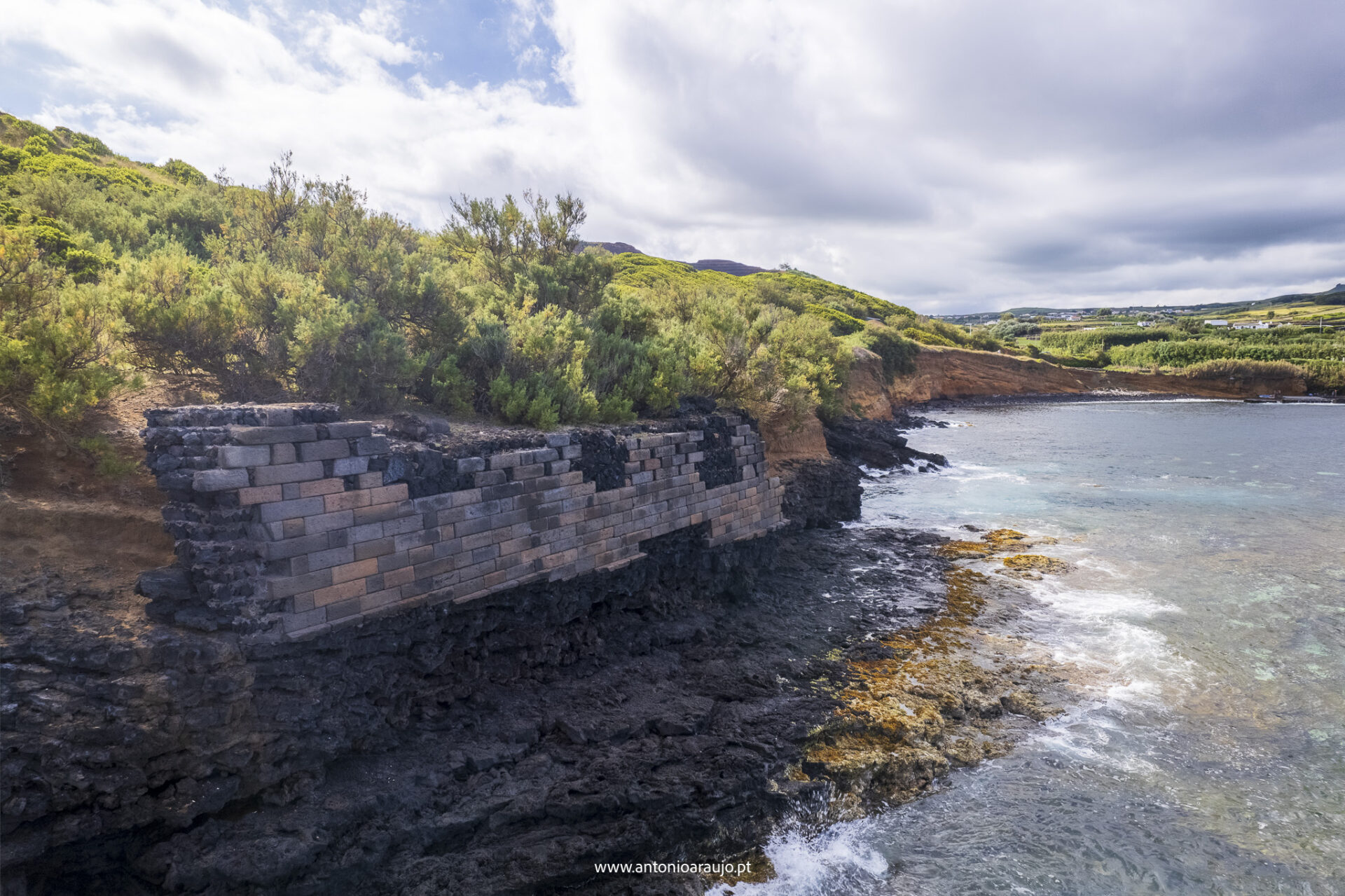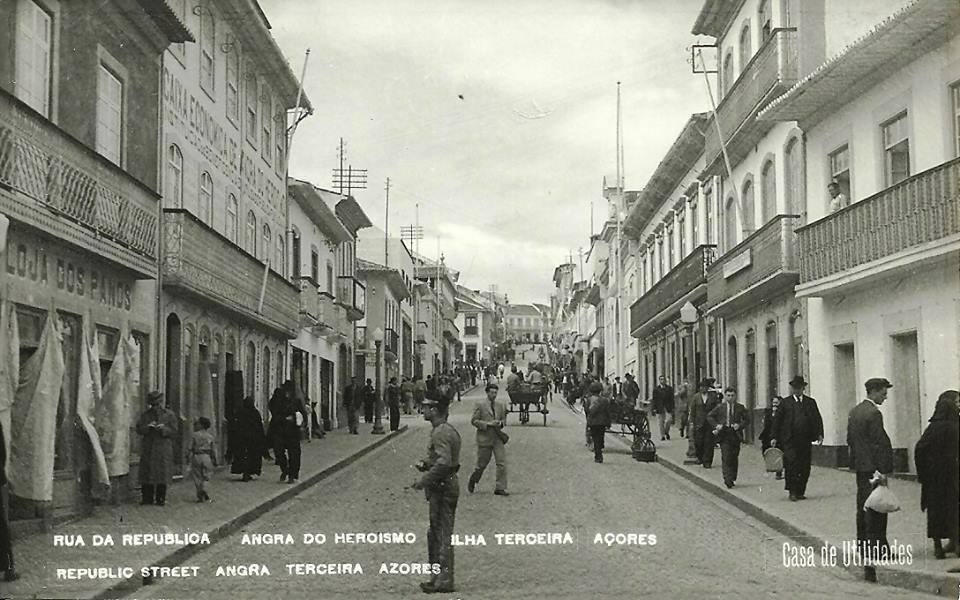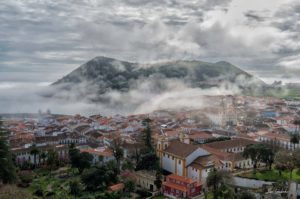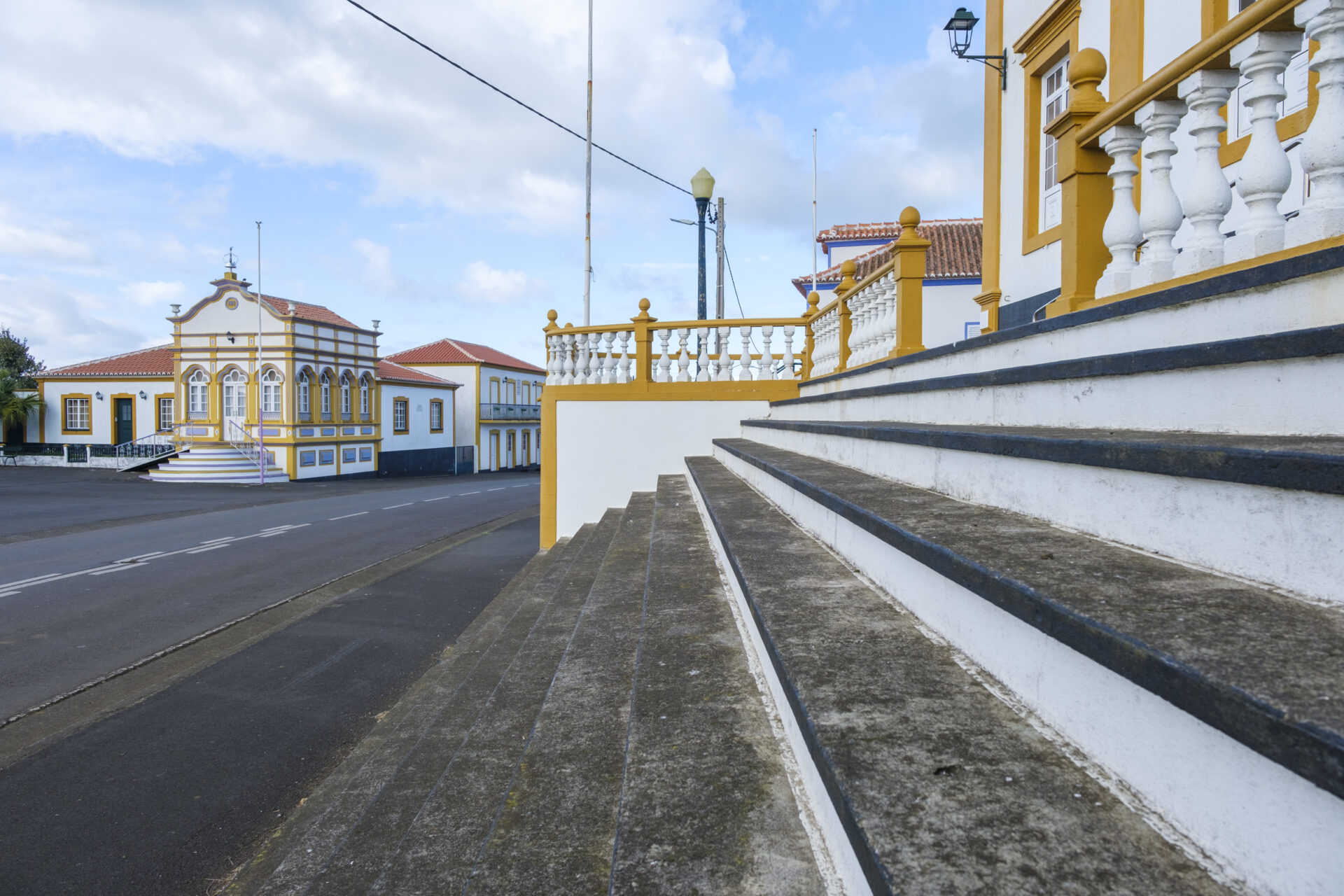
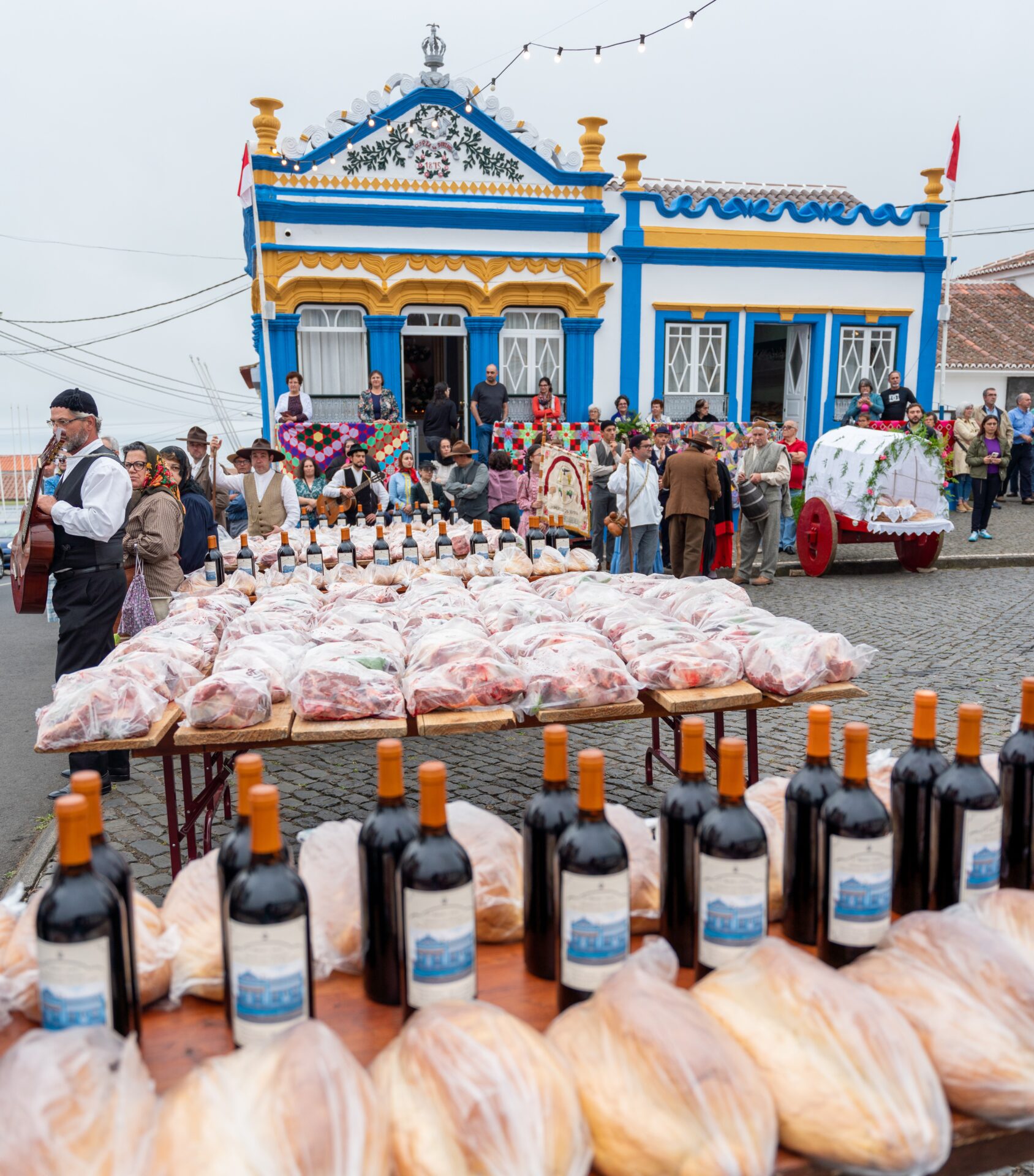
Under the Influence of the Holy Spirit
The term “paraclete” comes from the Greek parákletos, meaning the one who helps, comforts, encourages, protects, and intercedes. This is the title of the Third Person of the Christian Holy Trinity: The Lord Holy Spirit (Senhor Espírito Santo), as He is referred to by the Azoreans and how He is perceived in these islands.
Irmandade do Espírito Santo
Influenced by Spanish traditions in honor of the Divine Holy Spirit, Queen Saint Isabel, of Aragon, when coming to Portugal to marry King D. Dinis, established, in 1296 in the municipality of Alenquer, the Brotherhood of the Holy Spirit. At that time, the celebration was held in the royal chapel, which all the poor were invited to attend. The bishop placed the royal crown on the heads of these people, thus proceeding with the coronation in praise of the Holy Spirit.
Then, a royal banquet was held, the king and queen’s desire to serve the most disadvantaged, the so-called “Bodo of the poor” / “Bodo dos Pobres”. Later, in 1432, the settlement of the Azores began. Through the action of the Franciscan friars who were responsible for establishing the Catholic religion in the region and who brought with them the ideals of Fiore, the tradition of worshiping the Holy Spirit expanded and, even today, remains very much alive, even in communities of Azorean emigrants.
Traditions of worship of the Holy Spirit take place in the months of May and June, on the two Sundays known as the "Domingos de Bodo", more precisely, Pentecost Sunday and Trinity Sunday
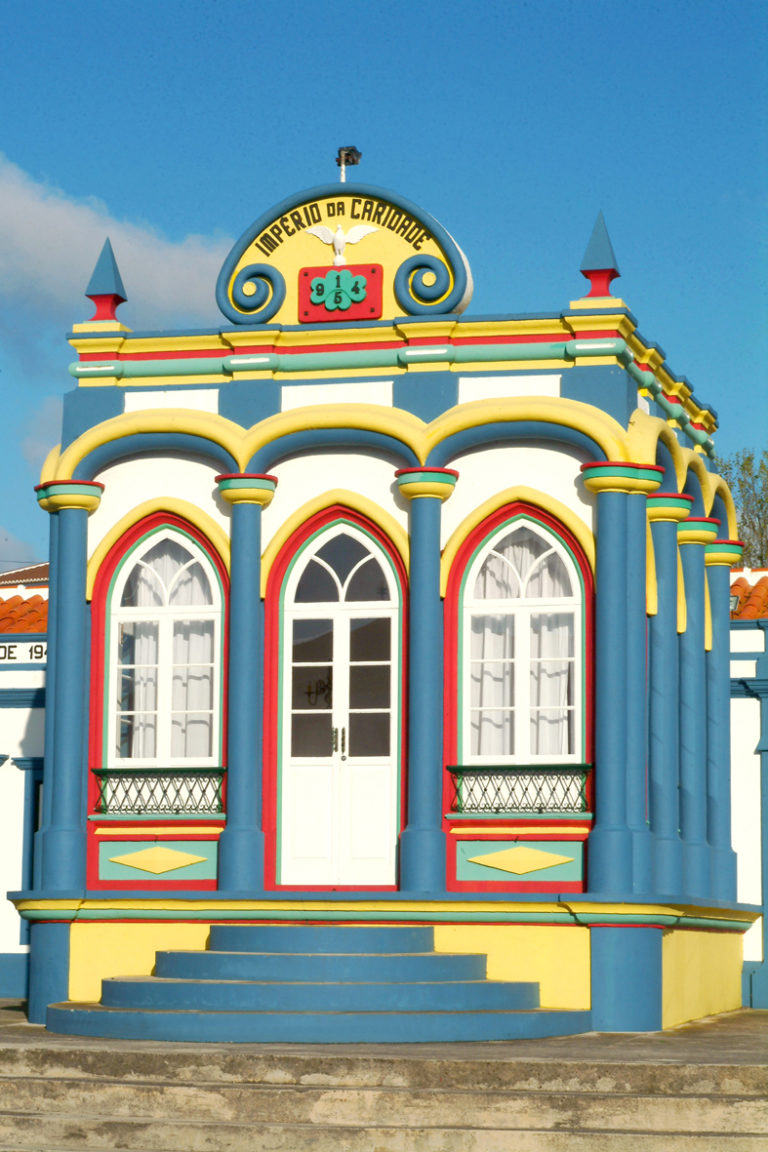
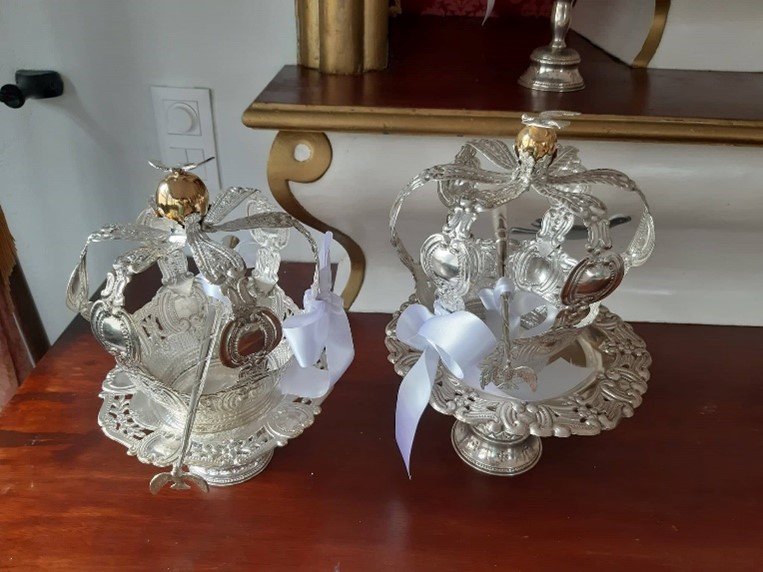
"Calf" and Coronation of the Holy Spirit
The cult of the Divine Holy Spirit has a strong pagan influence, due to the symbolism of the figure of the bull/cow, and its connection to the celebration of abundance associated with the harvest period. Thus, the symbolism of decorating the animals with flowers and a paper crown and the blessing with the crown’s scepter (the “decorated calf”) marks the festivity of the Divine Holy Spirit. On Friday, the calves are decorated and later sacrificed, while, on Saturday, alms of meat will be given, and, on Sunday, the Emperor will offer lunch to his guests. On Sunday morning, the procession takes place, leaving the Emperor’s house with all the insignia of worship (the crown, the scepter, the salver, rods and flags), to the Church, where the Coronation ceremony takes place. When the celebration ends, a new procession begins to the place where lunch takes place, or to the Emperor’s house.
Bread, meat, and wine, each person receiving their equal share, just like the others, as charitable alms
Impérios
The “Impérios”, or, previously, called “Treatos”, are the symbol of the Holy Spirit festivals on the Terceira island. Initially, these places of worship were made of wood, decorated with beeches and cloth and dismantled after the festival. In the second half of the 19th century, the first Empires were built in stone, the result of the generosity of emigrants from Terceira, paying their promises to the Divine. Currently, they have one or two outbuildings, which are called pantries, where party utensils are usually kept, or where “bodo” is prepared and distributed. These have a main facade, which may contain various symbols linked to the cult, such as the crown or the dove, as well as the date of its construction. This facade is always made up of three openings, one for the door and two for the windows, alluding to the three persons of the Holy Trinity, the Father, the Son and the Holy Spirit. Inside, there is the altar, where the crown is located.
There are 47 Impérios in the municipality of Angra do Heroísmo and 23 in the municipality of Praia da Vitória
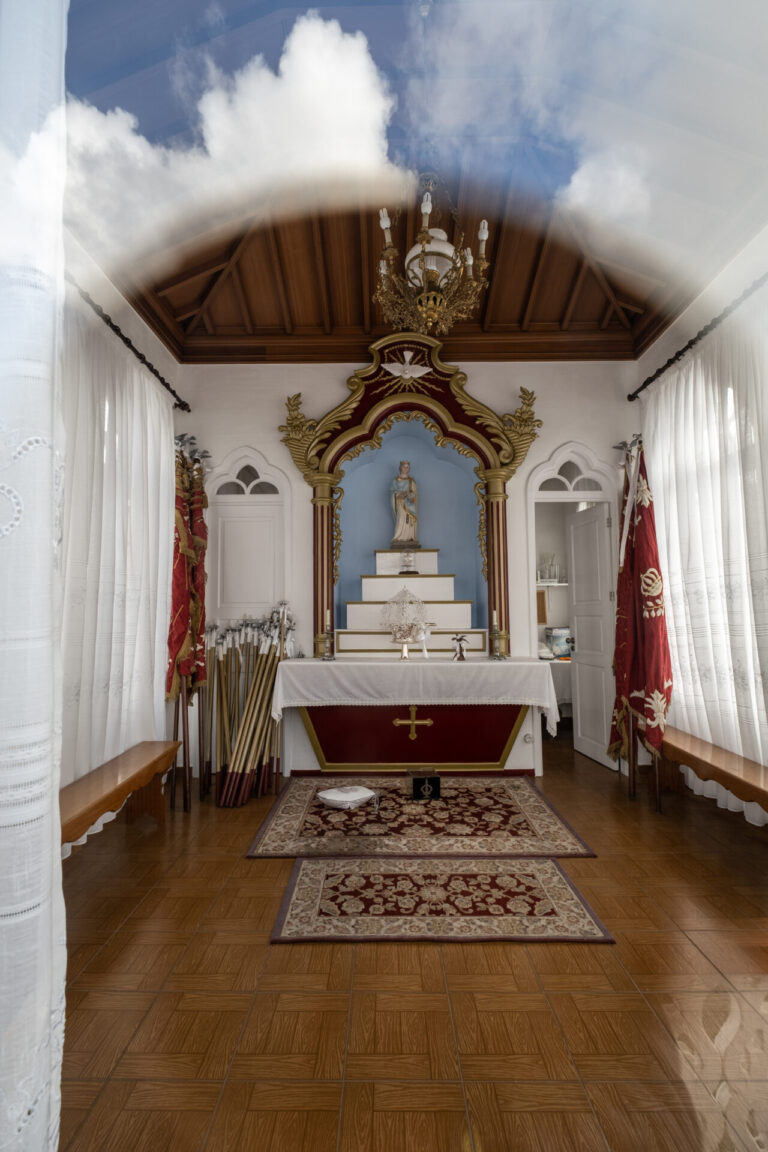
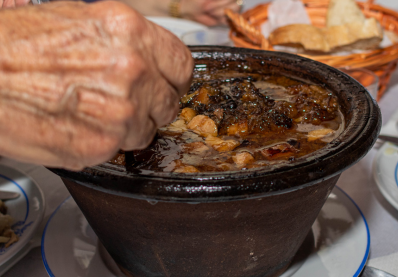
Alcatra
Celebrating the Holy Spirit in Terceira Island is reminiscent of a special meal and of a particular dish: Alcatra. With a mediaeval taste, it consists of slow-cooked meat inside
a traditional clay pot, preferably in a wooden oven, using spices from both sides of the Atlantic, such as black pepper, white pepper, allspice, and cloves, whole. The side dish
should consist, exclusively, of sweet bread, as the sauce is delicious on its own, with no potatoes or salad. This is the heritage of a very ancient way of eating, when each person laid a thick slice of bread on the table and a piece
of meat and sauce over it, eating slowly.
At the moment, Mestre Simas is the only pot maker in Terceira Island, visit Simas Pottery, in São Bento
Vila Nova Parish Church
This magnificent set of the silver crown, sceptre and salver is a familiar depiction of the Divine Holy Spirit in the Azores and
represents one of the few parishes on these islands where the Patron Saint is the very Third Person of the Holy Trinity. The
early settlement was established near the parish square, the Império, and the chapel, erected by Pêro Eanes do Canto, ombudsman for the King’s fleet. Although the parish church is now located at the top of the parish, it is below, around the Império, that the
celebrations take place on Domingos de Bodo (Bodo Sundays). The square in front of the império becomes filled with oxcarts, decorated, and adorned with cloths. The carros de toldo (awning carts).
Also visit the Church of Santo Cristo in Praia da Vitória
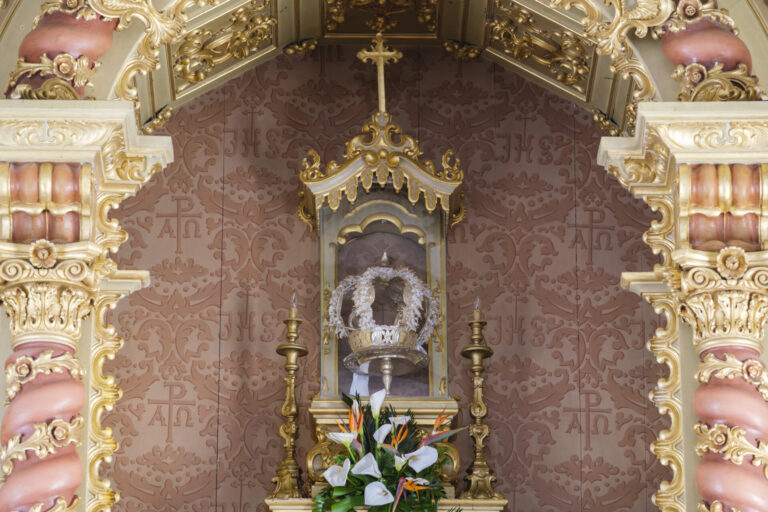
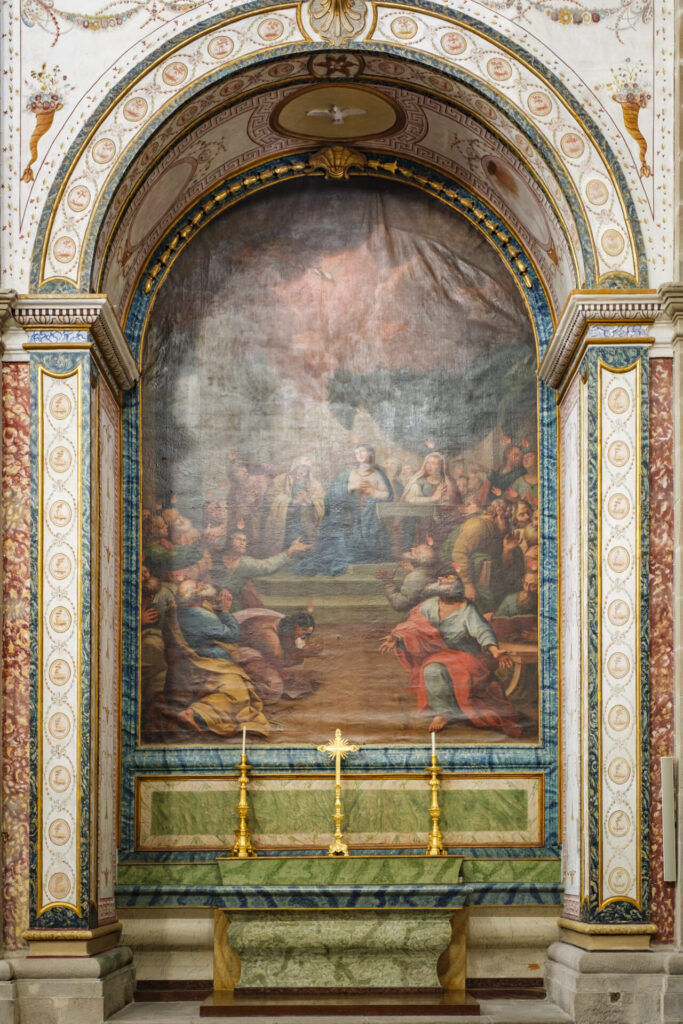
Altar of the Holy Spirit in the Church of Misericórdia
In this 18th century church, the image of the Descent of the Holy Spirit on the left altar, opposite to the altar of Senhor Santo Cristo das Misericórdias (Holy Christ of Divine
Mercy), represents the how the two brotherhoods, Santo Espírito and Misericórdia, came into union in 1498. In that
year, the new brotherhoods of Misericórdia emerged with the support of the Portuguese crown and assumed a leading role, receiving and taking ownership over the hospitals from the Santo Espírito, or Espírito Santo brotherhoods. When this new temple was built by the Brotherhood of the Misericórdia of Angra, both brotherhoods, whose identities
were still very much alive, found this way of establishing themselves.
Visit the Angra do Heroísmo Museum and its exhibition on the Cult of the Holy Spirit
Professionals who can guide you on this roadmap:
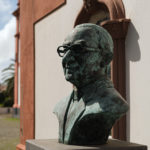
Filipe Rocha
Guia Turístico
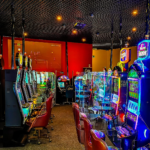
Azores Touch
www.azorestouch.com
915 275 997

Filipe Rocha
Guia Turístico

Azores Touch
www.azorestouch.com
915 275 997
Share with friends
Facebook
Twitter
LinkedIn
Email
